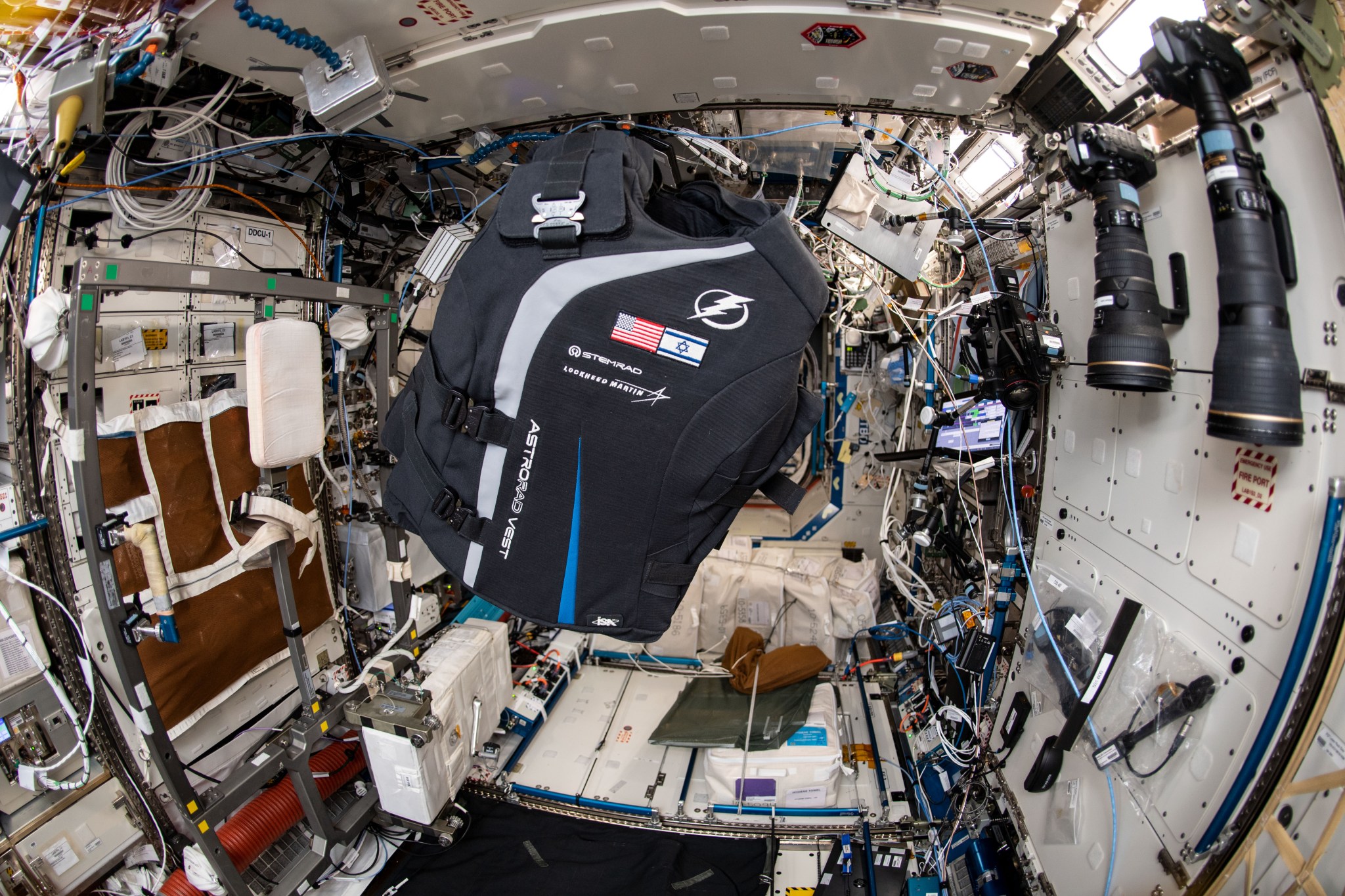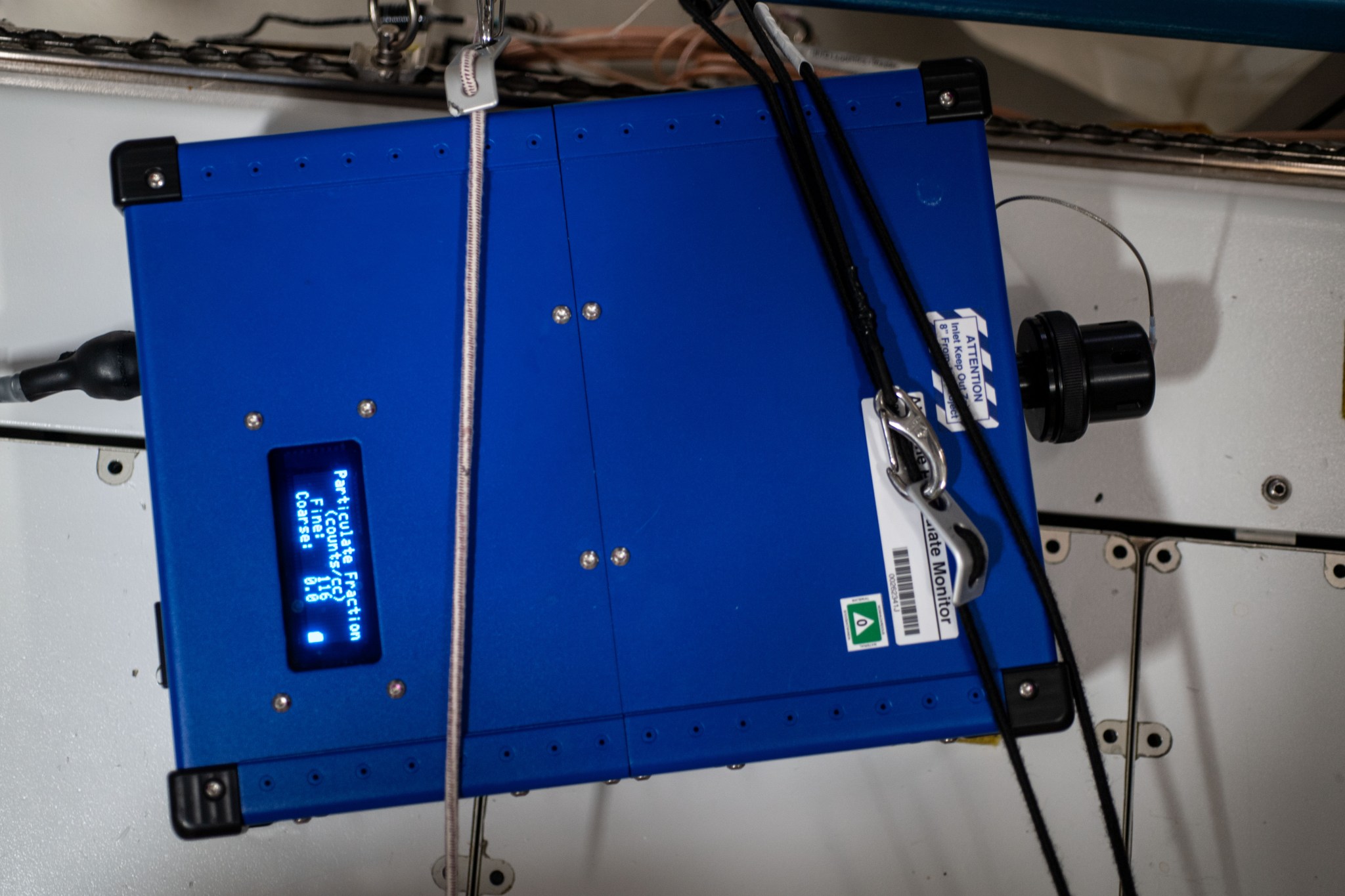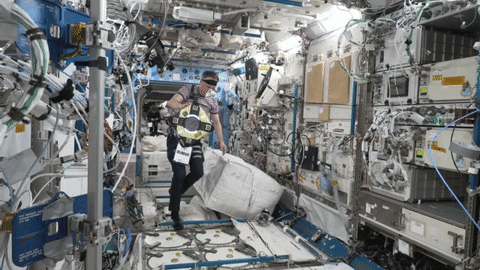[Lea la versión en español de este artículo]
Crew members aboard the International Space Station conducted scientific investigations during the week of April 4 that included testing a vest to provide radiation protection, monitoring station air quality, and examining the performance of an evaporative cooling system for spacesuits.
The space station, continuously inhabited by humans for 21 years, has supported many scientific breakthroughs. A robust microgravity laboratory with dozens of research facilities and tools, the station supports investigations spanning every major scientific discipline, conveying benefits to future space exploration and advancing basic and applied research on Earth. The orbiting lab also provides a platform for a growing commercial presence in low-Earth orbit that includes research, satellite services, and in-space manufacturing.
Here are details on some of the microgravity investigations currently taking place:
This vest is rad
AstroRad Vest, sponsored by the ISS U.S. National Lab, tests a vest designed to protect astronauts from radiation caused by unpredictable solar particle events. Astronauts wear the vest while performing daily tasks and provide input on how easy it is to put on, how it fits and feels, and the range of motion it allows. Designers use this input to improve the vest, which could protect crew members from possible harmful effects of radiation on future missions to the Moon and Mars. Results also may lead to improved radiation protection garments on Earth. Several times during the week, crew members wore the vest, documented range of motion tests, and completed a survey on the device.
Monitoring air quality
Adequate air quality helps crew members stay healthy and comfortable. But while requirements exist for maximum allowable concentrations of particulate matter, no measurement capability verifies whether these requirements are met. Airborne Particulate Monitor (APM) demonstrates an instrument for measuring and quantifying the concentration of particles in spacecraft air and uses the data to create an air quality map. These data help show the efficiency of current filtration systems and could support design of better environmental monitoring hardware for space vehicles and habitats, which becomes more important as mission duration increases. The technology also has applications in environmental monitoring and air pollution studies on Earth. During the week, crew members checked APM hardware, collected data, and downlinked it to the ground.
Cool suits
Spacesuits insulate crew members from significant temperature changes in space and regulate heat generated by the astronaut and equipment inside the suit. NASA’s SERFE demonstrates a technology for removing heat from spacesuits using water evaporation. The investigation determines whether microgravity affects performance of the system and examines whether contamination and corrosion affect its ability to regulate astronaut body temperature under various conditions. Results could support future exploration missions and contribute to improvements in evaporative cooling technology on Earth, including improving the tolerance of these systems to contamination and corrosion. During the week, crew members extracted water from the SERFE hardware for post-flight analysis on the ground.
Other investigations involving the crew:
- Vascular Aging, a Canadian Space Agency (CSA) investigation, collects data on vascular changes in astronauts. Results could support development of ways to reduce the potential health risks to crew members as well as guide prevention measures and treatments for the effects of aging on Earth.
- NutrISS, an investigation from ESA (European Space Agency), periodically assesses body composition and measures long-term energy balance modification over time. Results may improve understanding of the mechanisms behind body composition changes during spaceflight and help lead to ways to mitigate any negative effects of those changes.
- EarthKAM allows students to remotely control a digital camera mounted on the space station to take photographs of coastlines, mountain ranges, and other interesting features and phenomena on Earth. The EarthKAM team posts the images online, where they are available to the public and participating classrooms.
- LIDAL provides real-time measurements and monitoring of radiation aboard the space station, which helps validate models that assess the risks posed to the crew. This system could support future crewed exploration missions to the Moon, Mars, and beyond.
- UNIGLO tests how microgravity affects a module for processing various types of complex glasses. This investigation could help establish additional manufacturing capabilities in space and lead to development of novel fibers for optical communication and lasers in a variety of applications in space and on Earth.
- RFID Recon tests using a wireless radio frequency identification (RFID) reader attached to one of the station’s Astrobee robots to identify tagged cargo and determine its location on the space station. This technology could help crew members find items more quickly and efficiently.
- ISS Ham Radio provides students, teachers, parents, and others the opportunity to communicate with astronauts using amateur radio units. Before a scheduled call, students learn about the station, radio waves, and other topics, and prepare a list of questions on topics they have researched.
For daily updates, follow @ISS_Research, Space Station Research and Technology News or our Facebook. Follow ISS National Lab for information on its sponsored investigations. For opportunities to see the space station pass over your town, check out Spot the Station.
John Love, ISS Research Planning Integration Scientist
Expedition 67





























